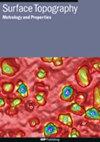A measure of perceived quality to secure the polishability of new paint systems
IF 2
3区 材料科学
Q2 ENGINEERING, MECHANICAL
引用次数: 0
Abstract
The automotive industry continuously strives to reduce their environmental impact. For the paint shop it means to introduce more sustainable paint concepts, while maintaining the production rate and retain the right surface appearance that is crucial for the vehicle’s perceived quality. Today most painted parts are visually inspected and, if needed, manually repaired by abrasive polishing to eliminate spot defects. The repair process consists of one sanding step to remove the defect, and one or two rubbing/polishing steps to restore the surface, but still it tends to be a non-reliable process leaving patterns or clusters of shallow micro scratches seen as three-dimensional shapes moving over the surface when viewed from different angles like holograms. These so called ‘polishing roses’ are hard to detect in artificial light but clearly visible in Sunlight and therefore they constitute a constant quality issue. Accurate polishing procedures in combination with more objective inspection techniques would secure a high surface quality—but what is ‘accurate’? The overall scope of the study was to deepen the knowledge of paint systems to develop test routines for the polishability of coatings already during the development stage, and thereby ease the implementation of new coating systems in production. The study was based on collected process data from professional polishers to define a process window based on key parameters for successful end-of-line repairs of coated surfaces, i.e. strategies minimizing the occurrence of visible polishing traces. A CNC-machine was built up for the purpose to systematically test and evaluate new coating systems and repair procedures. The surface estimation was made by visual inspections as well as by a further developed photometric stereo system providing quantitative images of remaining repair traces.确保新涂料系统可抛光性的一种可感知质量的度量
汽车工业一直在努力减少对环境的影响。对于油漆车间来说,这意味着引入更可持续的涂料概念,同时保持生产率和保持正确的表面外观,这对车辆的感知质量至关重要。今天,大多数涂漆的部件都是目视检查的,如果需要,还可以通过磨料抛光手工修复,以消除斑点缺陷。修复过程包括一个磨砂步骤,以消除缺陷,一个或两个摩擦/抛光步骤,以恢复表面,但这仍然是一个不可靠的过程,留下图案或簇浅微划痕,当从不同的角度观察时,就像全息图一样,在表面上移动的三维形状。这些所谓的“抛光玫瑰”在人造光下很难发现,但在阳光下却清晰可见,因此它们构成了一个持续的质量问题。精确的抛光程序与更客观的检查技术相结合将确保高表面质量-但什么是“精确”?研究的总体范围是加深对涂料系统的了解,在开发阶段为涂料的可抛光性制定测试程序,从而简化新涂料系统在生产中的实施。该研究基于从专业抛光师那里收集的工艺数据,根据成功修复涂层表面的关键参数定义工艺窗口,即最小化可见抛光痕迹的策略。为了系统地测试和评估新的涂层系统和修复程序,建立了一台数控机床。表面估计是通过目视检查和进一步发展的光度立体系统,提供剩余修复痕迹的定量图像。
本文章由计算机程序翻译,如有差异,请以英文原文为准。
求助全文
约1分钟内获得全文
求助全文
来源期刊

Surface Topography: Metrology and Properties
Materials Science-Materials Chemistry
CiteScore
4.10
自引率
22.20%
发文量
183
期刊介绍:
An international forum for academics, industrialists and engineers to publish the latest research in surface topography measurement and characterisation, instrumentation development and the properties of surfaces.
 求助内容:
求助内容: 应助结果提醒方式:
应助结果提醒方式:


